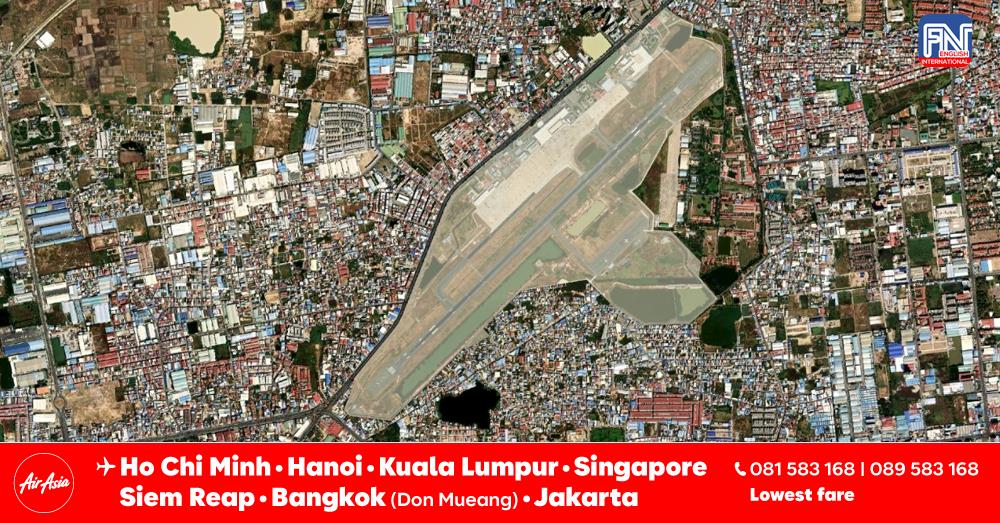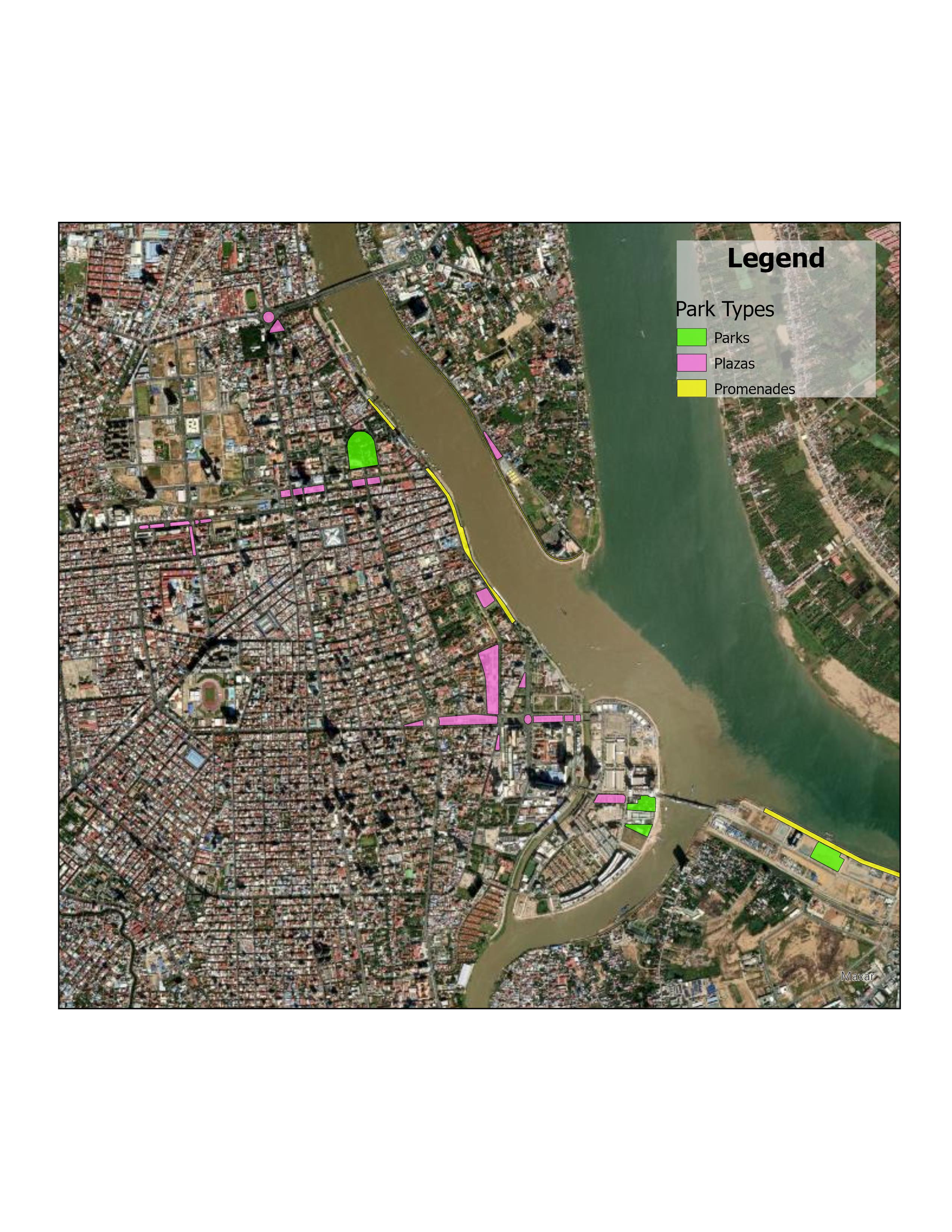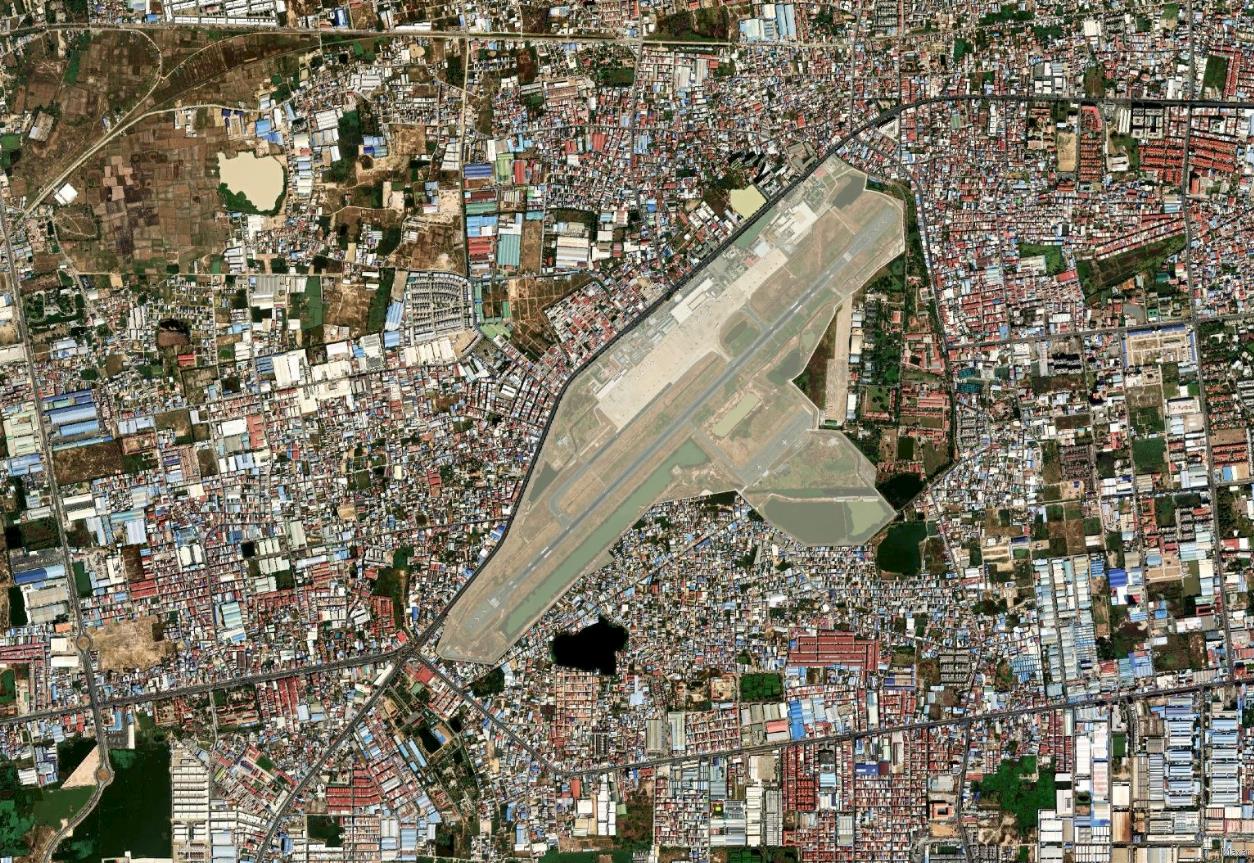(Phnom Penh): Phnom Penh, Cambodia's bustling capital, is at a turning point in its urban development. With rapid population growth and relentless urban expansion, the city faces pressing challenges, including the urban heat island effect and frequent flooding. However, an unprecedented opportunity lies ahead: the soon-to-be-retired Phnom Penh International Airport. By transforming this vast, densely surrounded area into a world-class urban park, the city can address these challenges while enhancing liveability, sustainability, and economic growth.
The Need for Green Space
Phnom Penh’s green space is alarmingly limited. A report by the Global Green Growth Institute (GGGI) indicates that in 2016, the city had only 1.1 square meters of urban green space per capita—far below the World Health Organization’s recommended 9 square meters. Meanwhile, rapid construction has further diminished natural areas, exacerbating environmental issues. Green spaces play a crucial role in urban health, offering cooling effects, improving air quality, and mitigating flood risks by absorbing storm water. Moreover, they provide recreational opportunities and improve public well-being. A citywide survey found that nearly 95% of Phnom Penh residents desire more green spaces.
Beyond environmental benefits, green spaces also contribute to social equity. In Phnom Penh, many affluent gated communities contain private parks, leaving lower-income residents with limited access to public recreational areas. A large, centrally located urban park would bridge this gap, creating an inclusive space accessible to all.
A Vision for the Airport Park
With the relocation of Phnom Penh International Airport to a new site, the existing 386-hectare space presents a rare opportunity to create a transformative green space, similar to New York’s Central Park or London’s Hyde Park. Such a park would enhance public health and environmental resilience and attract tourism and investment.
A well-designed urban park could incorporate:
Lush Greenery and Water Features: Native vegetation and water bodies would combat the urban heat island effect, reducing surrounding temperatures by up to 4°C.
Rain Gardens and Sustainable Drainage Systems: These systems would mitigate flooding by allowing rainwater to seep into the ground instead of overwhelming drainage infrastructure.
Recreational and Cultural Spaces: Open lawns, jogging and biking trails, children’s play areas, and performance venues would transform the park into a hub for residents of all backgrounds.
Preserved Airport Features: The airport’s runway could be repurposed as a linear park, inspired by New York’s High Line, offering a unique historical touch.
Educational and Community Facilities: Incorporating botanical gardens, an environmental education centre, and public event spaces would add further social and community values.
Economic and Social Benefits
Urban parks provide more than beautifying a city—they drive economic growth. Studies show that properties near green spaces appreciate in value, benefiting both homeowners and local businesses. Central Park’s creation in the 19th century led to property values in surrounding neighbourhoods skyrocketing by over 1,000% in a few decades. Similarly, a revitalized Phnom Penh Airport Park could transform its surroundings into a prime real estate and commercial area, attracting international investors.
A park of this scale could also serve as a major tourist attraction. Cities like Singapore and Bangkok have successfully integrated large green spaces into their urban fabric, making them key destinations for visitors. Phnom Penh could follow suit by developing an iconic park that draws both locals and tourists, boosting the city’s hospitality and retail sectors.
Additionally, green spaces foster social equity by providing accessible recreational areas for all socioeconomic groups. Unlike gated communities with private parks, a large urban park would be a shared asset for every Phnom Penh resident.
Environmental and Climate Resilience
Beyond its aesthetic and economic impact, a new urban park could be a cornerstone of Phnom Penh’s climate resilience strategy. With increasing temperatures and heavy rainfall leading to more frequent flooding, a well-planned green space could act as a natural buffer. Trees and vegetation absorb carbon dioxide and improve air quality, while wetlands and rain gardens help manage storm water.
Studies from cities worldwide demonstrate that urban parks significantly reduce local temperatures and air pollution. For instance, Research on the urban heat island effect in Zvolen, Slovakia, showed that green spaces had an average cooling effect of 3.5°C, with reductions reaching up to 4.9°C in some cases. Implementing a similar model in Phnom Penh could make the city far more liveable.
A Defining Moment for Phnom Penh
With careful planning and visionary leadership, Phnom Penh has the chance to redefine itself as a greener, more resilient, and liveable city. Converting the old airport into a premier urban park would set a precedent for future developments and create a lasting legacy. This transformation would symbolize the city’s commitment to sustainable growth and environmental stewardship.
Urban planning decisions made today will shape Phnom Penh for generations. By prioritizing a green and sustainable future, city officials can ensure a higher quality of life for residents while positioning the capital as a model of modern, eco-friendly urban development. Now is the time to act—transforming a retiring airport into a thriving green heart for the city’s future.
About the Author
Sophat Seng is a King Morgridge Scholar and a senior at the University of Wisconsin–Madison, where he studies landscape and urban studies and earned a certificate in integrative design in built and natural environments. Originally from Phnom Penh, Cambodia, Sophat brings a global perspective to his studies and work and ultimately seeks innovative ideas to improve his city. Whether it’s studying the socioeconomic and health effects of city parks or investigating the next innovation of transportation trends, Sophat is a passionate urbanist who aspires to leverage his expertise and become a city and transportation planner who works to create a sustainable and equitable urban environment for everyone.
=FRESH NEWS


